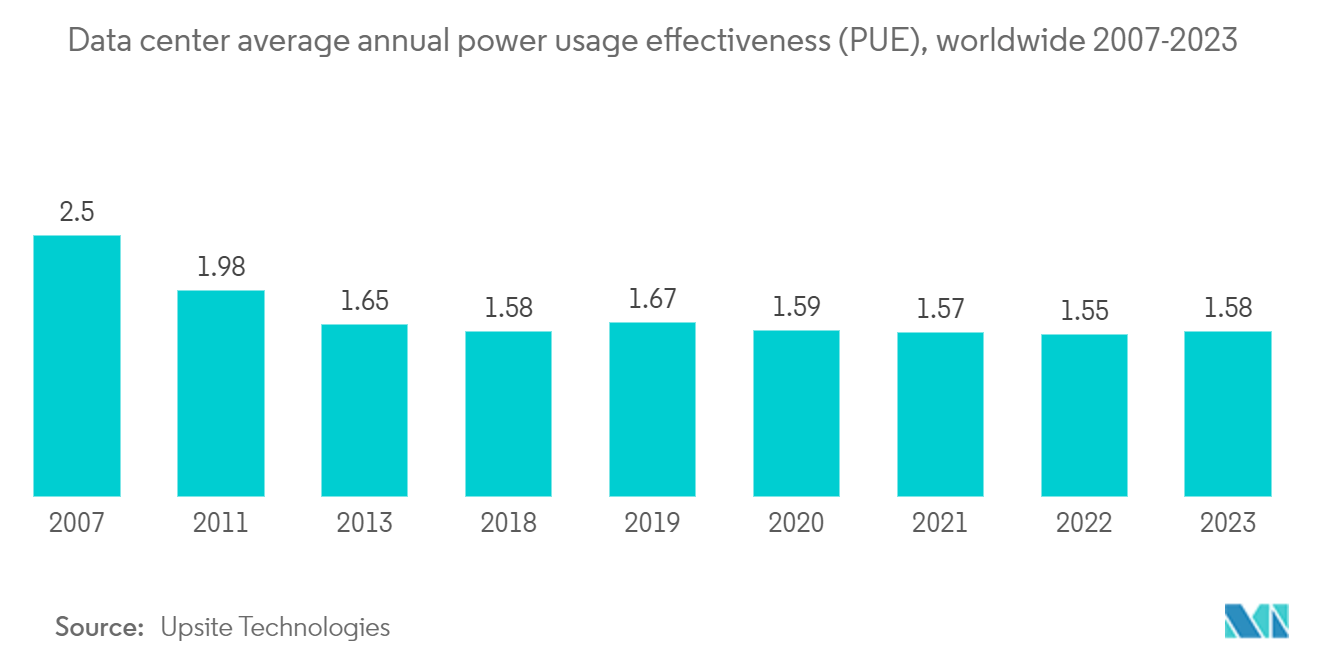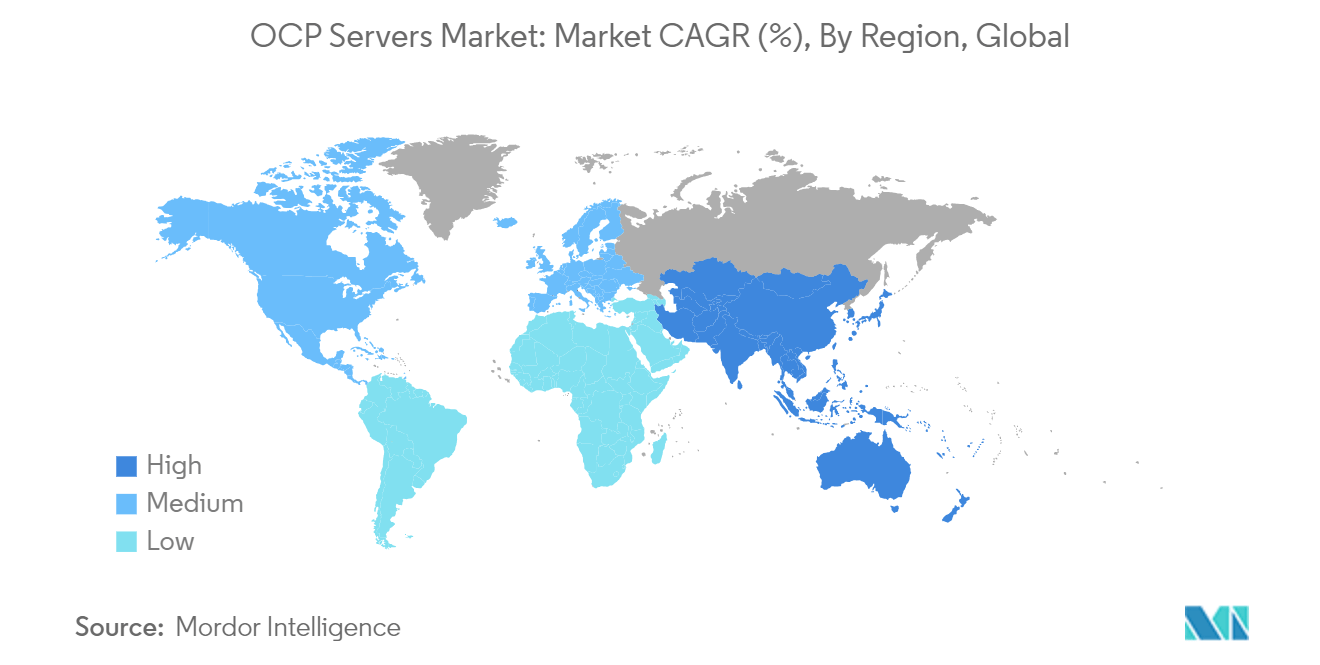Market Trends of Open Compute Project (OCP) Servers Industry
Cost Reduction and Power Efficiency to drive the market
- Large-scale data centers and hyperscale computing environments are increasingly adopting OCP servers. These servers offer a cost-effective, sustainable, and flexible alternative to traditional designs. OCP servers enhance energy efficiency by using power-efficient components, optimized cooling systems, and innovative thermal design techniques. As a result, data centers benefit from reduced energy consumption and lower operating costs.
- With a focus on scalability and modularity, OCP servers allow data centers to easily expand and efficiently utilize their computing resources, tailoring their infrastructure to specific needs.
- Standardized hardware interfaces and streamlined design principles in OCP servers simplify management and maintenance. This facilitates easier troubleshooting, upgrades, and replacements, significantly cutting down the time and effort needed for maintenance.
- OCP's design centralizes power supply management for the entire rack. Instead of relying on 80 individual supplies for 40 servers, the design utilizes six larger, more efficient supplies. While typically sufficient, an additional seventh or eighth can be added for N+1 or N+2 configurations. OCP integrates batteries directly into the rack, negating the need for traditional, data center-sized uninterruptible power supplies (UPS).
- This integration allows for software control over the power supplies, enabling the deactivation of unused ones. In the event of a supply failure, local batteries maintain power continuity. Simultaneously, the N+1 configuration activates a backup supply, and technicians receive alerts specifying which power supply requires replacement. This streamlined approach, with fewer power supplies and reduced power consumption, enables the operation of more servers without compromising availability.

North America to witness significant share
- North America is home to many hyperscale data centers that require highly scalable, efficient, and cost-effective infrastructure solutions. Hyperscale service providers manage vast amounts of data and user traffic. OCP servers prioritize scalability, allowing these providers to adjust their infrastructure in response to growing user demands. The modular design of OCP servers facilitates rapid expansion and optimal use of computing resources. OCP's alignment with the requirements of hyperscale data centers has contributed to its growth in North America.
- For instance, Facebook's data centers, which handle massive user data volumes and the platform's continuous growth, rely on OCP servers. The scalability of OCP servers enables Facebook to cater to its billion-plus users and their increasing workloads efficiently.
- With the data traffic generation, upcoming data centers are expected to follow Tier 4 standards. In the United States, IP traffic reached an annual run rate of 955.7 exabytes in 2021, up from an annual run rate of 376.2 exabytes in 2016, suggesting the growing demand for more redundant and efficient facilities. As a result, tier 4 data centers are expected to hold the highest market share of 48.9% in 2029, followed by tier 3 facilities with a share of 45.4%.
- OCP servers are recognized for their cost-effective design. Hyperscale service providers can reduce capital and operational expenses by leveraging open-source hardware designs and commodity components. Emphasizing energy-efficient designs allows these providers to lower their cost per computation unit.
- Several apps account for considerable smartphone reach across audiences, with YouTube accounting for about 74% of audience reach, followed by 61% for Gmail, 59% for Facebook, and 58% for the Google Search app. The extensive reach of such smartphone apps, despite the Android and iOS division among the audience, signifies deep app penetration and usage in the United States. This highlights the need for data storage to provide the required memory platforms for such media to perform and store user data, thereby creating a greater demand for data processing facilities.
- OCP servers adhere to open standards, ensuring compatibility and interoperability among various hardware components and vendors. This flexibility allows hyperscale providers to select from multiple OCP-compliant solutions, cultivating a more modular infrastructure. Such standardization streamlines deployment, maintenance, and scalability, enabling access to a broad hardware ecosystem.


